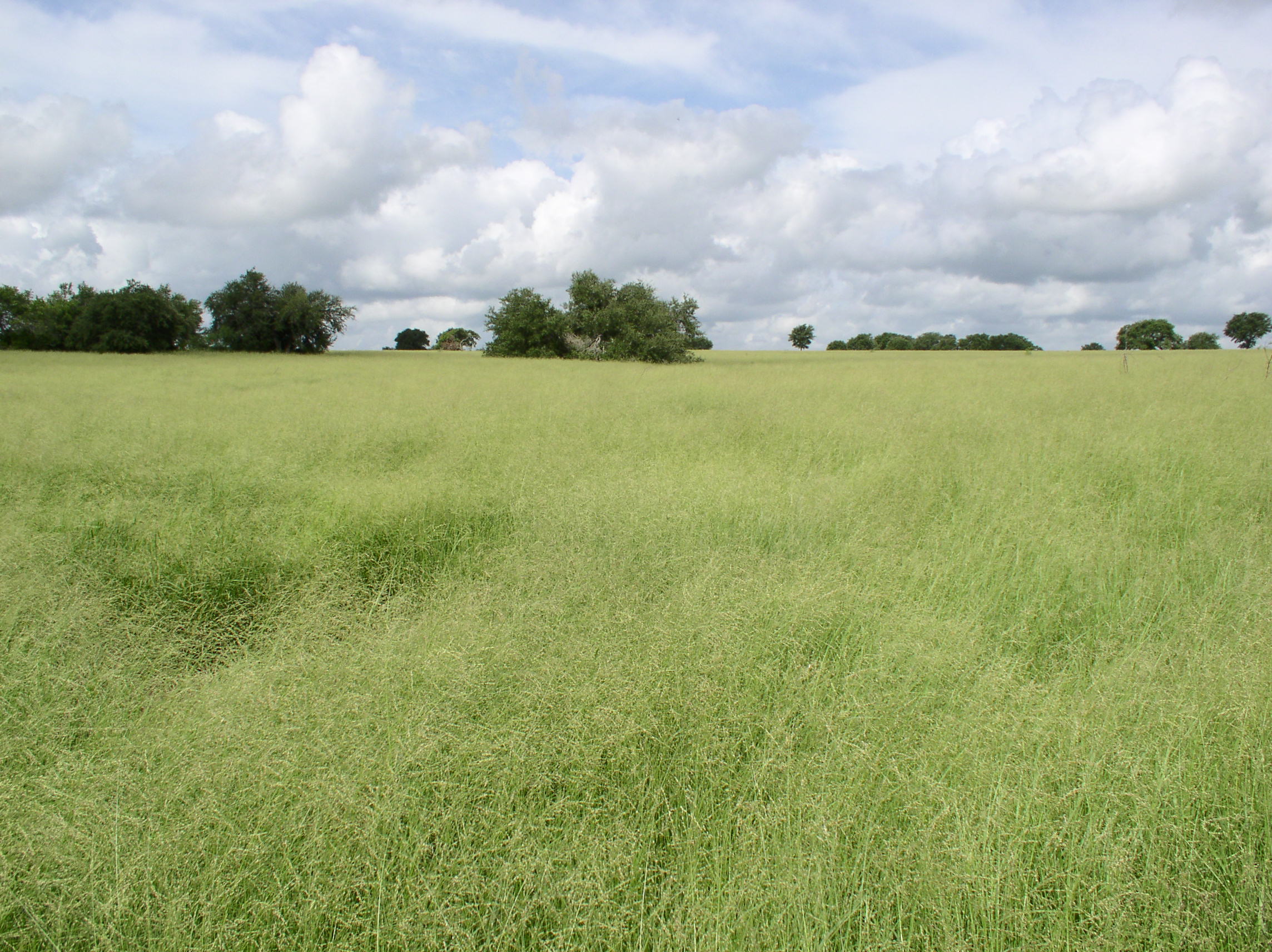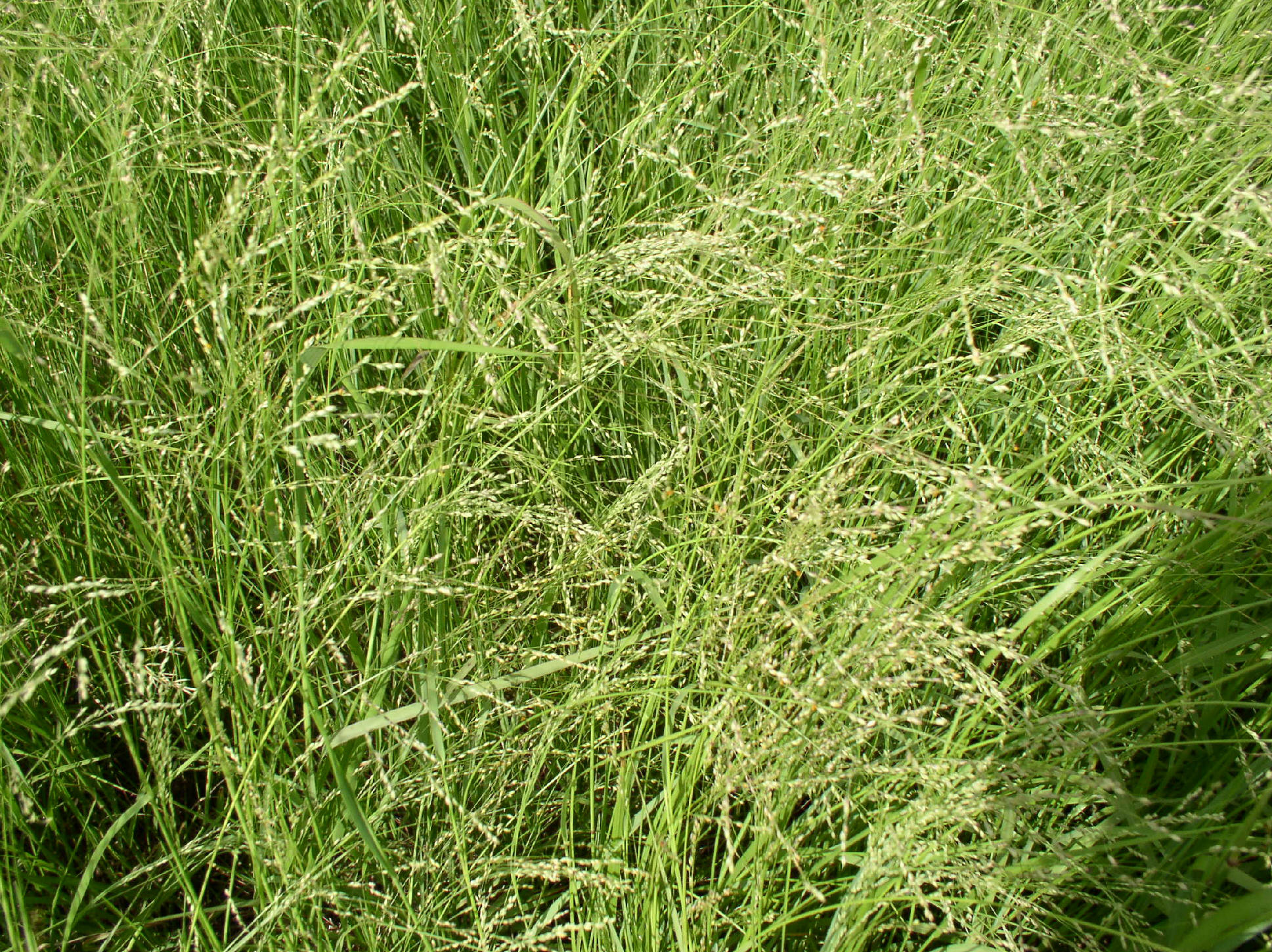
Klein Grass Selection-75 Field (Beeville, Texas)

Klein Grass (Selection-75) seed head
Klein Grass (Selection-75)
Perennial
Warm Season
Introduced
Seeded Variety
Klein grass (Selection-75) is a warm season, introduced, perennial bunch grass used primarily for grazing and hay production. Klein grass was introduced from Africa. Klein grass response to fertilizer and does better in years with more precipitation. While Klein grass is excellent for cattle, it can be toxic to horses, sheep and goats when it is green and growing following cutting, grazing, etc. Overgrazing should be avoided on Klein grass as it can have a difficult time recovering. It is a good management practice to remove cattle before overgrazing.
Klein grass is very beneficial to wildlife. Whitetail deer will graze the younger plants and use it for cover and nesting. Klein grass provides a good habitat and the seed provides a good food source for game birds such as quail, doves and turkey.
Adaptation and Maintenance: Klein grass grows well in Texas, Arizona,New Mexico, California, South Carolina, Florida, Louisiana, Mississippi, Alabama and Georgia. It also grows well in Mexico and some areas in Central America. Klein grass propagates both by seed and vegetatively. Klein grass seed is imported into the USA from Argentina when Texas seed production is low. Klein grass does better on medium to heavier soils. It can be planted by itself (mono-culture) or as a mix along with natives grasses or other bunch grasses.
Growth Height: 30- 48 inches
Drought Tolerance: Fair
Cold Tolerance: Fair
Minimum Rainfall: 12-16 inches
Planting (Seeding) Rate: 1.5-3.5 PLS Lbs/acre
(If drill seeding, use 1.5 PLS Lbs or if broadcast seeding, use 2-3.5 PLS Lbs)
(If drill seeding, use 1.5 PLS Lbs or if broadcast seeding, use 2-3.5 PLS Lbs)
Planting Time: March 1st - End of November
(planting time window depends on the region that you are located and rain considerations)
(planting time window depends on the region that you are located and rain considerations)
Planting Depth: 1/4 inches
Soil Adaptation: Sandy Loam to Clay, Sandy soils could be an issue
Fertilizing
Starter Fertilizer (15-15-15)
at a rate of 200 Lbs/acre is a catch all rule of thumb; however, if you have a fresh root plow on virgin brush, you may not need to fertilize. Soil samples can be taken and analyzed for N-P-K requirements.
Maintenance Fertilizer: (30-10-0)
is a typical fertilizer used to restore the nitrogen depletion during the grazing or baling process. Again, soil sample analysis can tell you more accurately what type on how much fertilizer you need.
Starter Fertilizer (15-15-15)
at a rate of 200 Lbs/acre is a catch all rule of thumb; however, if you have a fresh root plow on virgin brush, you may not need to fertilize. Soil samples can be taken and analyzed for N-P-K requirements.
Maintenance Fertilizer: (30-10-0)
is a typical fertilizer used to restore the nitrogen depletion during the grazing or baling process. Again, soil sample analysis can tell you more accurately what type on how much fertilizer you need.
